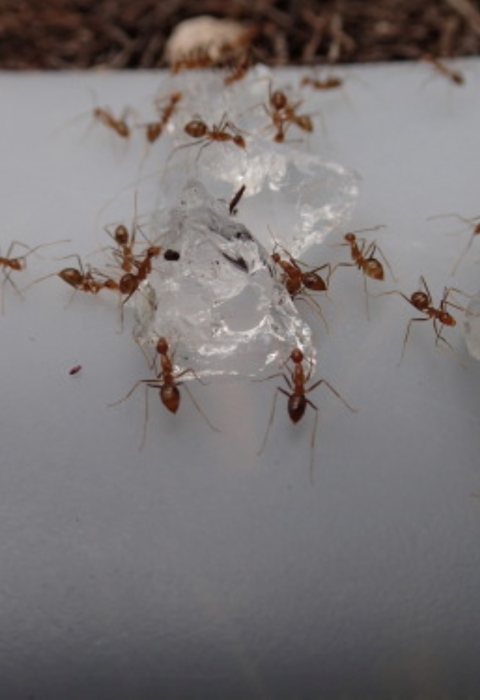This year is the 50th anniversary of the Endangered Species Act, a law that has been a powerful catalyst for conservation of America’s most treasured fish, wildlife, plants and their habitats. In the Pacific Region, our Tribes, state and federal agencies, and partners have joined with our dedicated staff to be the driving force behind the successes we share and the strength ensuring we can address the challenges ahead. Celebrate this milestone with us in this collection of stories as we reflect on past successes, assess current challenges, and envision an equally bright future for the next 50 years and beyond.
Traveling 750 miles this week by transport ship from Honolulu, HI to Johnston Atoll National Wildlife Refuge is a Service crew leader, four volunteers, and an unusual amount of raw household sugar stored in 400, 5 gallon buckets equaling over 10,000 pounds!
Since 2010, an invasive species invasive species
An invasive species is any plant or animal that has spread or been introduced into a new area where they are, or could, cause harm to the environment, economy, or human, animal, or plant health. Their unwelcome presence can destroy ecosystems and cost millions of dollars.
Learn more about invasive species , Yellow Crazy Ant, has been terrorizing seabird colonies on the main island of Johnston Atoll and was also a serious threat to the world’s largest red-tailed tropic bird community.
Crazy Ant Strike Team (CAST) volunteers working a 6-month rotation have been methodically eradicating the ant population and now only 1% of the original population remains. The incoming CAST crew is expected to arrive on June 19th and they will commence cooking up a hydrogel bait cocktail containing pesticide (according to label at a much reduced concentration) to which they will add sugar and water that will then be absorbed by crystal pellets.
Instead of spraying the bait over vegetation with a mist gun as earlier crews had previously, water storing pellets will be spread by hand so the worker ants can bring it back to the nest, eradicating them from the inside out. This method is believed to be more effective in killing the queen and covering hard to reach nooks and crannies.
This approach is expected to eradicate the remaining invasive ant population and give the seabird colonies a safe environment to reproduce. We wish CAST 10 all the best of luck on their journey and 6-month stay on Johnston Atoll recently designated part one of the world’s largest Marine Protected Areas! Stay tuned for updates, photos and more to come!
Story by Ann Bell, Visitor Services Manager, Pacific Islands Refuges and Monuments Office.
###
The U.S. Fish and Wildlife Service works with others to conserve, protect, and enhance fish, wildlife, plants, and their habitats for the continuing benefit of the American people. For more information, visit www.fws.gov/pacificislands, or connect with us through any of these social media channels at https://www.facebook.com/PacificIslandsFWS, www.flickr.com/photos/usfwspacific/, https://medium.com/usfwspacificislands or www.twitter.com/USFWSPacific.










